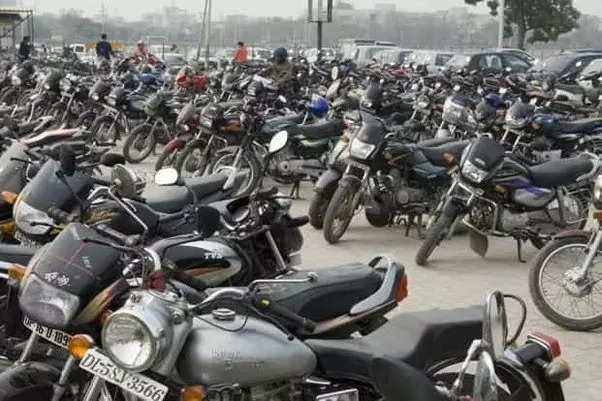
[ad_1]

New Delhi: In a relief to automakers, sales of entry-level two wheelers — mostly bought by rural consumers — rose in strong double digits in the second half of FY24, underscoring a recovery in demand in this key consumer segment for the first time since the pandemic.
The trend continued in April, driven by an improvement in income levels thanks to healthy economic growth, making the automobile industry bullish of a sustained recovery in the twowheeler segment and sparking green shoots of recovery in small car sales.
Sales of motorcycles (up to 110 cc) rose by 17.5% year-on-year to 2.89 million units between October 2023 and March this year, while entry scooters (up to 125 cc) and mopeds rose by 21% each to 2.71 million units and 258,896 units, respectively. In April too, sales of entry motorcycles, scooters and mopeds surged 35% (535,507 units), 21% (539,439 units) and 20% (41,924 units), respectively.
“The last six months have shown good growth. While earlier two-wheeler sales were increasing on a low base and driven by more premium models, now growth has trickled down and is happening across segments,” said Manish Raj Singhania, president at Federation of Automobile Dealers Associations (FADA).
The industry body termed the rebound in sales of entry-level two-wheelers as early signs of recovery in small car sales which will, however, reflect with a lag.
Sales of entry-level two-wheelers were either flat or weak in the first six months of last fiscal. Sales began to recover from the last festive season due to decent monsoons, moderating inflation and broader economic growth putting more money in the hands of consumers.
Other rural-focused sectors are also starting to show signs of recovery.
Sales of fast-moving consumer goods began to rebound in rural sales in the March quarter. Most leading manufacturers told analysts recently they expect rural consumption to recover completely this year amid forecasts of a normal monsoon — crucial for the agriculture sector and farmers’ incomes.
Two-wheeler sales are expected to surpass pre-Covid peak either this fiscal year or the next, Sudarshan Venu, managing director at TVS Motor Company told ET recently. Venu said the Indian economy is in a “good situation”, which will drive consumption going forward.
The car industry sees a glimmer of hope in a reviving rural two-wheeler market. Maruti Suzuki, the country’s largest carmaker, recently predicted that entry level small car sales — badly affected since the pandemic — will start recovering within two years.
While overall domestic sales of mini cars (length less than 3600 mm) continue to be subdued, Maruti Suzuki has seen the ratio of two-wheeler owners buying its Alto small car model rise to 78% last fiscal, from 74% in FY21.
AFFORDABILITY FACTOR
Average monthly household income of such buyers has risen to Rs 58,000 from Rs 47,000 in the same period. As affordability improves, driven by economic growth, car penetration will rise by 37% to 44 per 1,000 people by 2030, triggering a revival in the segment, industry stakeholders said.
India’s current vehicle penetration of 32/1,000 population is miniscule, compared to 600-700/1,000 in matured markets like Europe and Japan, offering tremendous growth potential.
“While inflation has increased manifold, the average monthly household income has increased by 7% only in the last four years,” Partho Banerjee, senior executive officer (marketing and sales) at Maruti Suzuki said, adding as affordability improves, demand for small cars will revive.
Average monthly household income of mini cars buyers like Alto stood at Rs 54,200 prior to the pandemic in FY20. The decline in income during Covid-hit years, together with the rise in car prices by as much as 30% due to the transition to higher safety and emission norms (BSIV to BSVI from April 2020), hit hard demand at the entry level.
Sales in the segment crashed 68% to 152,000 units last fiscal, from 471,000 units in FY20.
Banerjee pointed out that latent demand remains massive in a country where more than 65% of consumers are aged less than 35 years if affordability constraints are addressed.



